This Light Cheesecake recipe has great classic flavor with far less fat and calories than traditional cheesecake. Ricotta cheese and Greek yogurt combine with cream cheese to create a slightly fluffier texture and add amazing flavor to this delicious dessert.
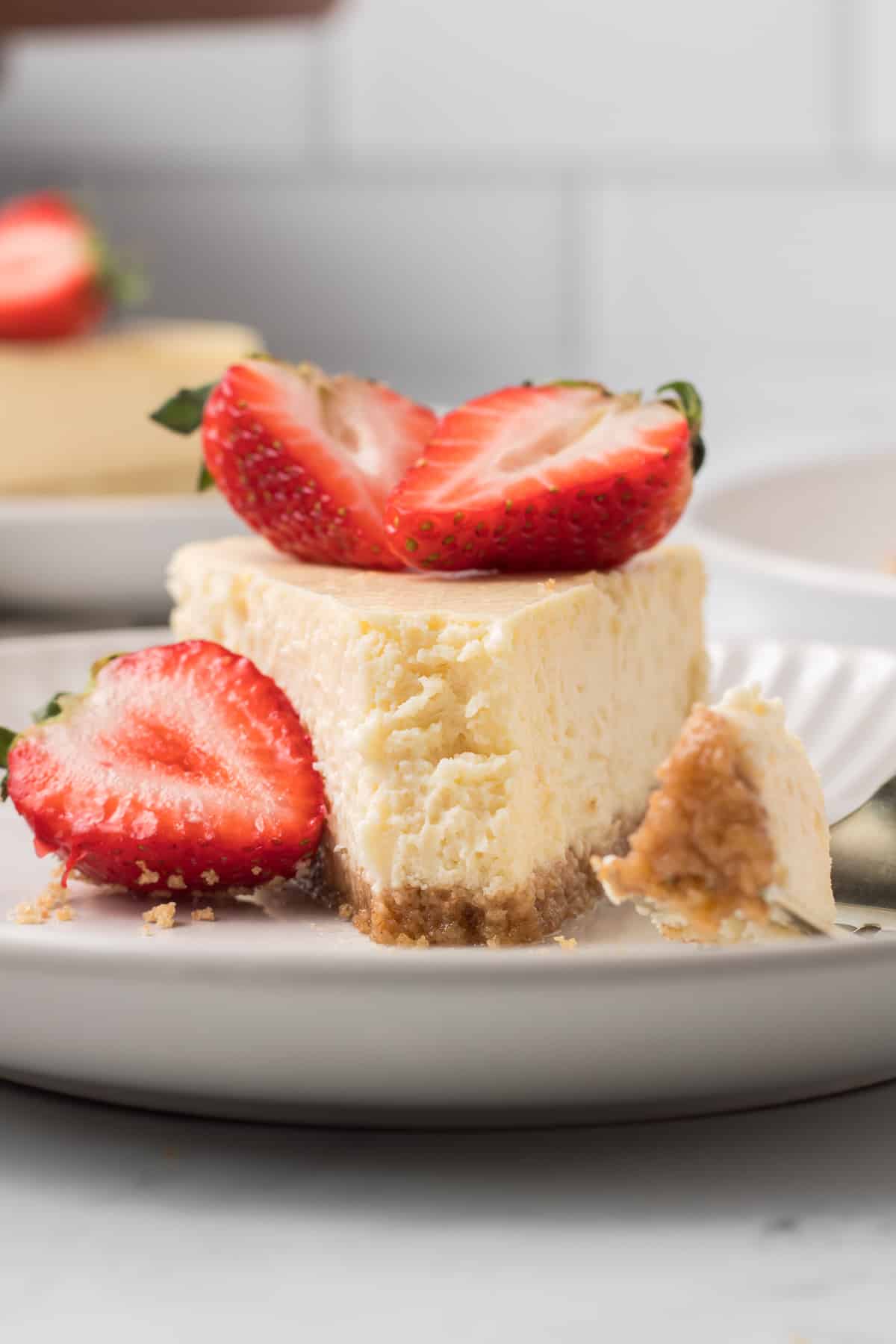
This recipe has been a labor of love. I’ve tested this yummy cheesecake multiple times over the course of the past couple of months and I’m so happy to be sharing it just in time for the holidays.
When made as written, one slice of this Light Cheesecake has 335 calories and 16g of fat – about half the calories and way less than half the fat of traditional cheesecake. It has a less dense and wonderfully creamy texture which makes it perfect for serving after a big holiday meal.
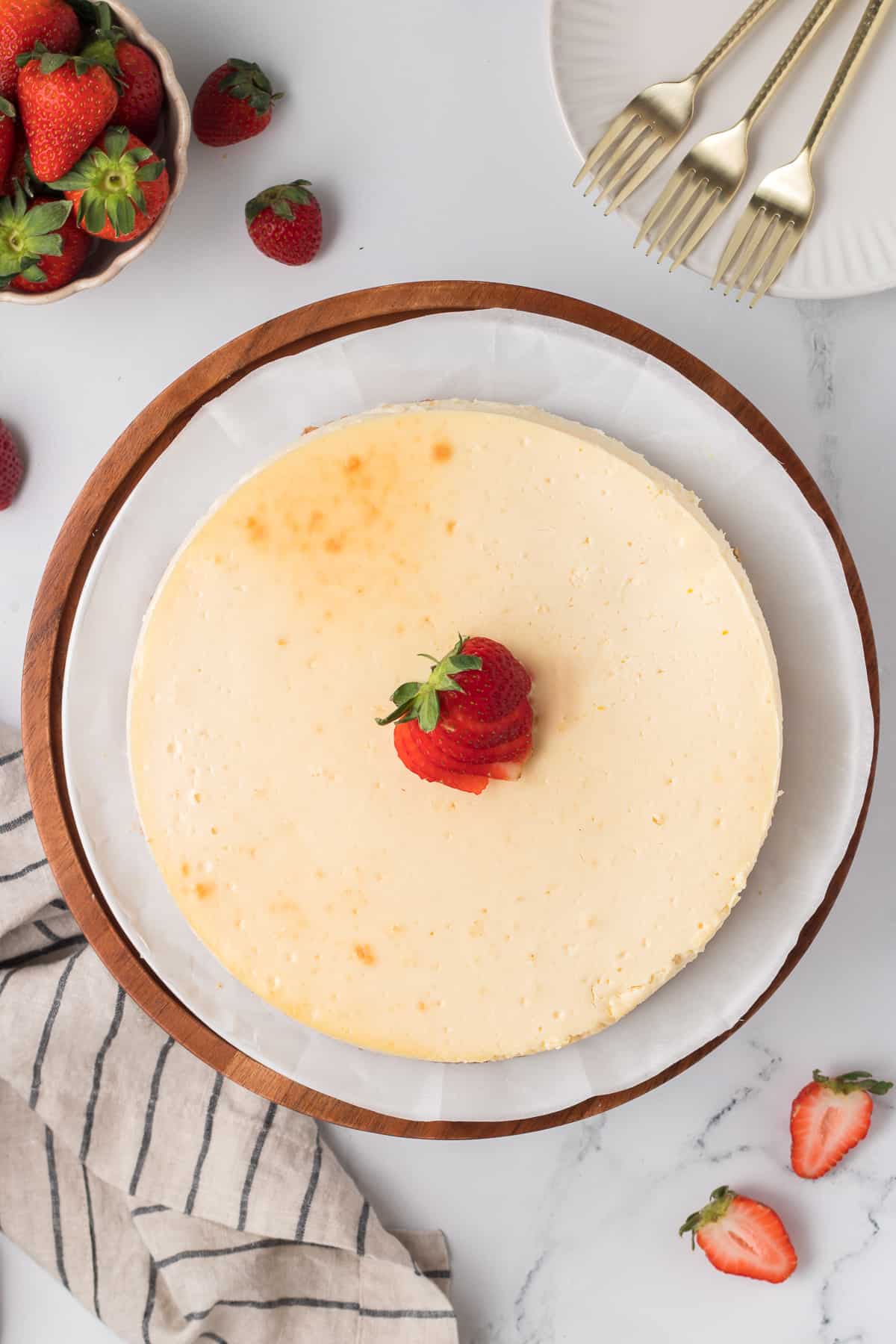
Ingredients
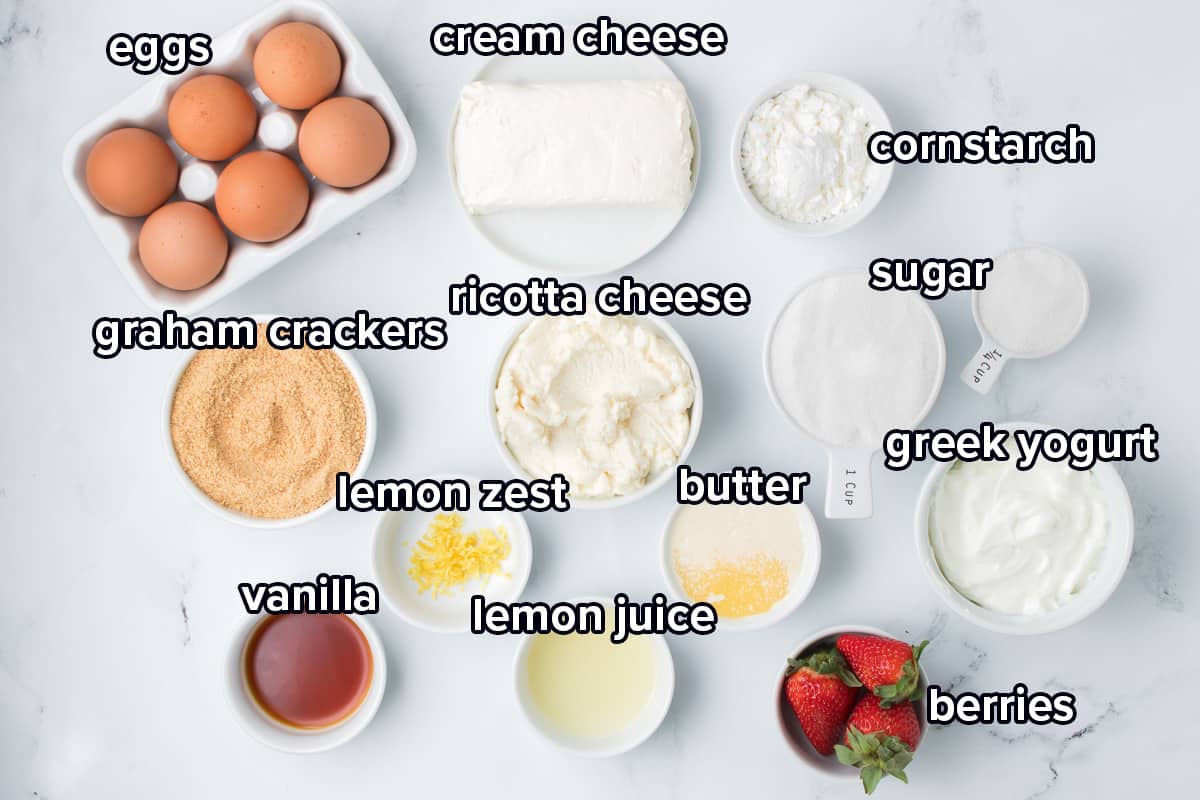
- Graham cracker crumbs – From about 12 full sheets of graham crackers.
- Granulated sugar – A little to sweeten the crust and the rest for the cheesecake filling. I opt for real sugar but you can use your favorite sugar substitute for a low sugar cheesecake.
- Melted butter
- Cream cheese – One-third less fat cream cheese is the best choice for a truly light cheesecake. I don’t recommend using nonfat cream cheese for the best result.
- Ricotta cheese – I’ve made this cheesecake with both part-skim and whole milk ricotta and both were great.
- Plain Greek yogurt – Either nonfat Greek yogurt or if you’d like to add a little richness, go with 2%.
- Eggs
- Lemon – Zested and juiced.
- Pure vanilla extract
- Cornstarch – A little cornstarch is added to the filling to thicken it and help it set up to the correct consistency.
- Fresh berries – Sliced strawberries are a classic choice with cheesecake. You could also do a combination like raspberries and blackberries, depending on what you can find at the store.
Pro Tip
Allow your cream cheese to sit out at room temperature for at least 45 minutes to 1 hour to soften before beginning. Cream cheese will not blend smoothly when chilled.
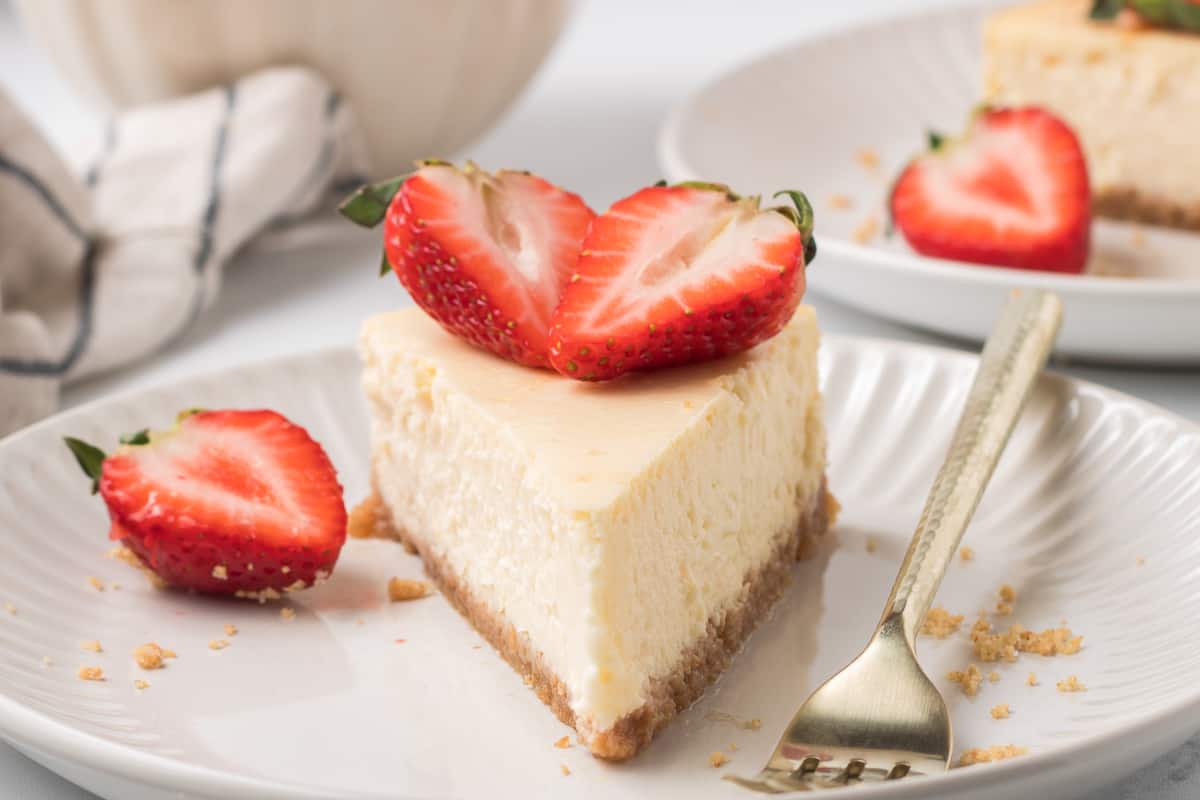
How to Make Lighter Cheesecake
This is a quick overview of how to make this recipe. Please refer to the recipe card at the end of this post for detailed instructions and amounts.
For the Graham Cracker Crust
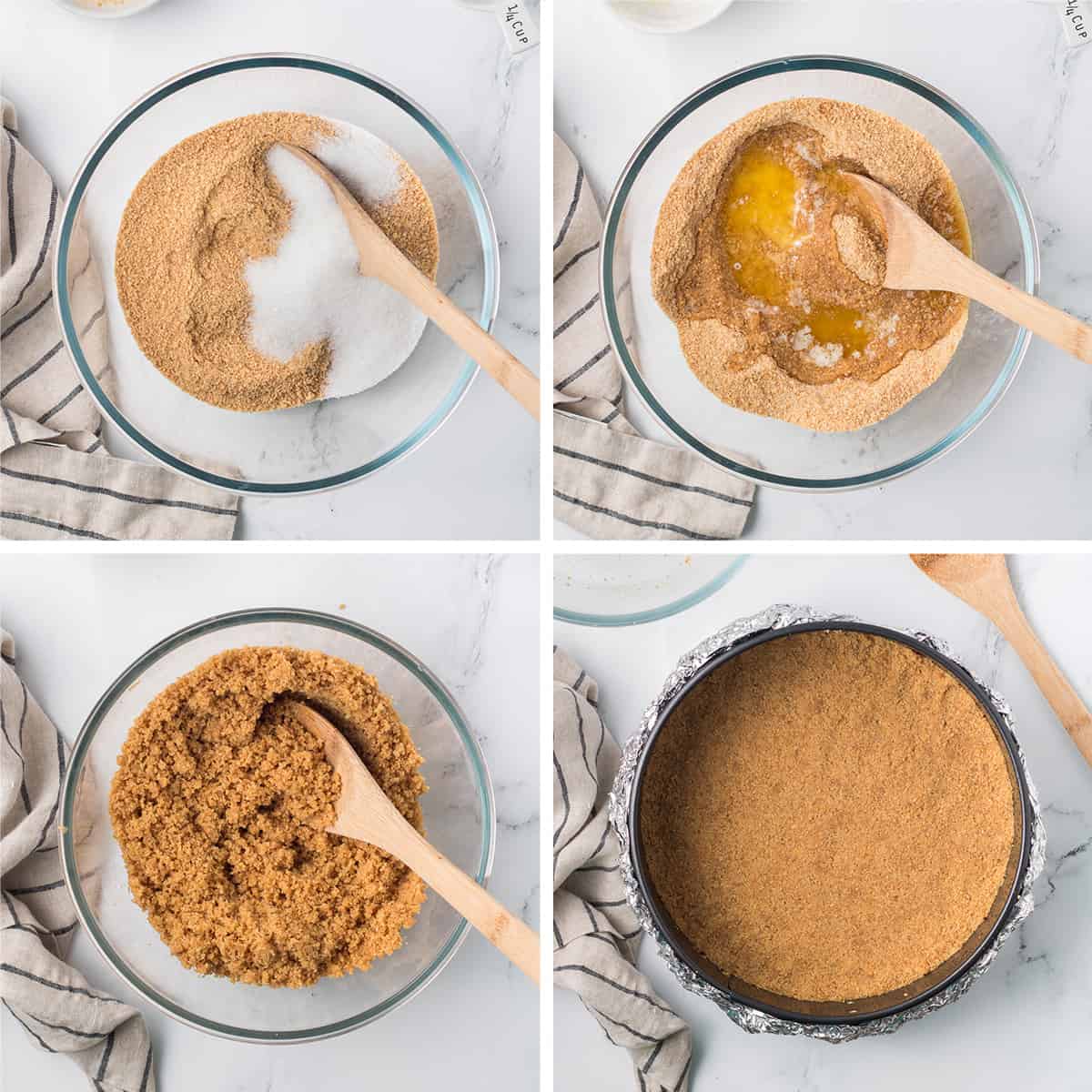
- Combine the graham cracker crumbs and sugar in a small mixing bowl.
- Stir in the melted butter.
- Mix until well combined.
- Press the crumb mixture onto the bottom of springform pan that has been coated with nonstick cooking spray and wrapped with aluminum foil. Bake for 12 minutes, until lightly browned and fragrant. Let the crust cool on a wire rack while you prepare the filling.
Use your food processor to quickly and easily crush graham crackers to a fine consistency.
For the Lighter Cheesecake Filling
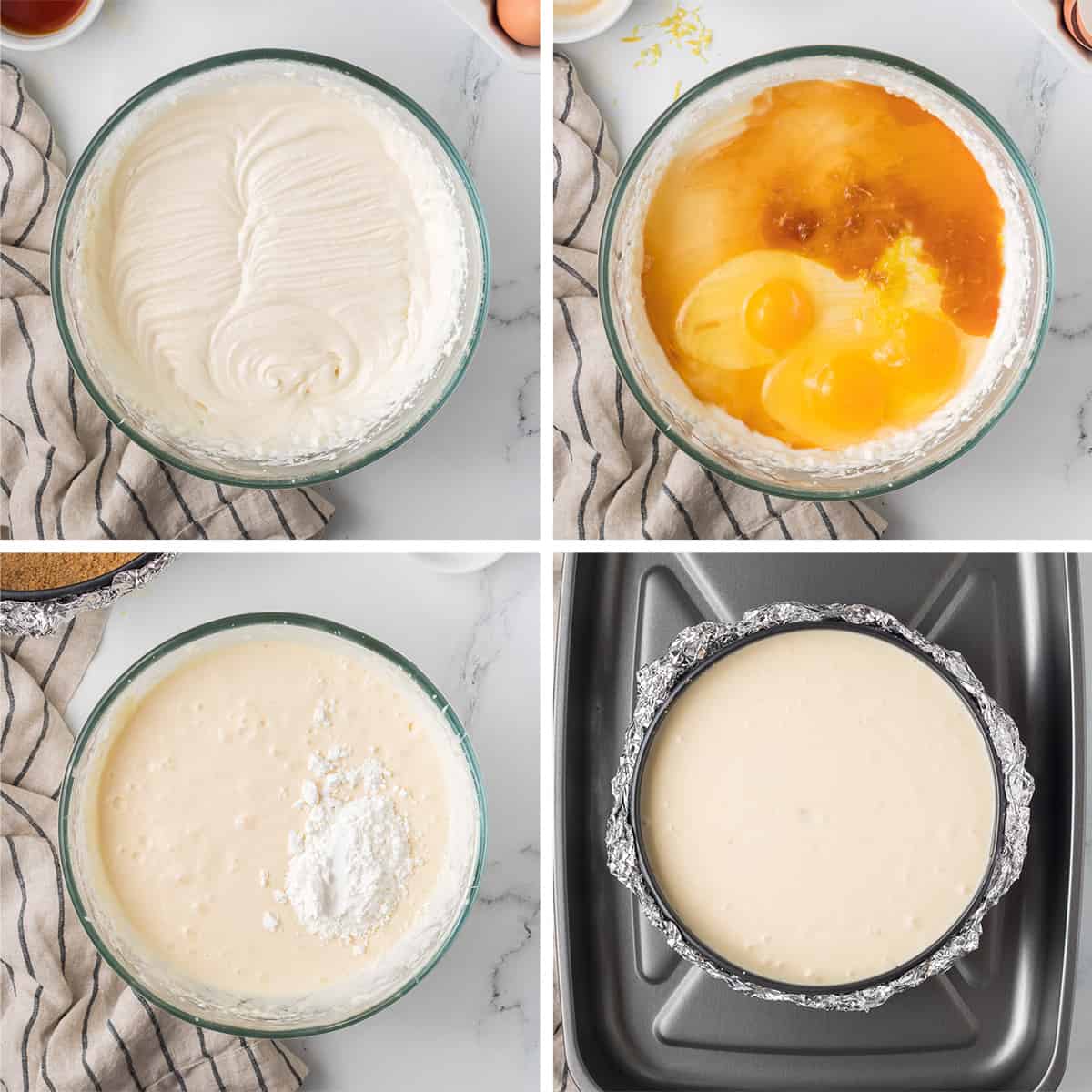
- In a large bowl, beat the cream cheese, ricotta, yogurt, and sugar until smooth.
- Beat in the eggs, lemon zest, juice and vanilla.
- Finally, add the cornstarch and beat just until combined.
- Scrape the mixture into the slightly cooled crust in the springform pan. Place the foil-wrapped springform pan in a large pan (like a roasting pan) and add about 1-inch of hot water to the larger pan. Pour slowly and carefully to avoid splashing any water on the cheesecake or into the foil around the edges. Bake at 350 degrees F until outer edges are golden and nearly set and the center is still jiggly, 80 to 90 minutes.
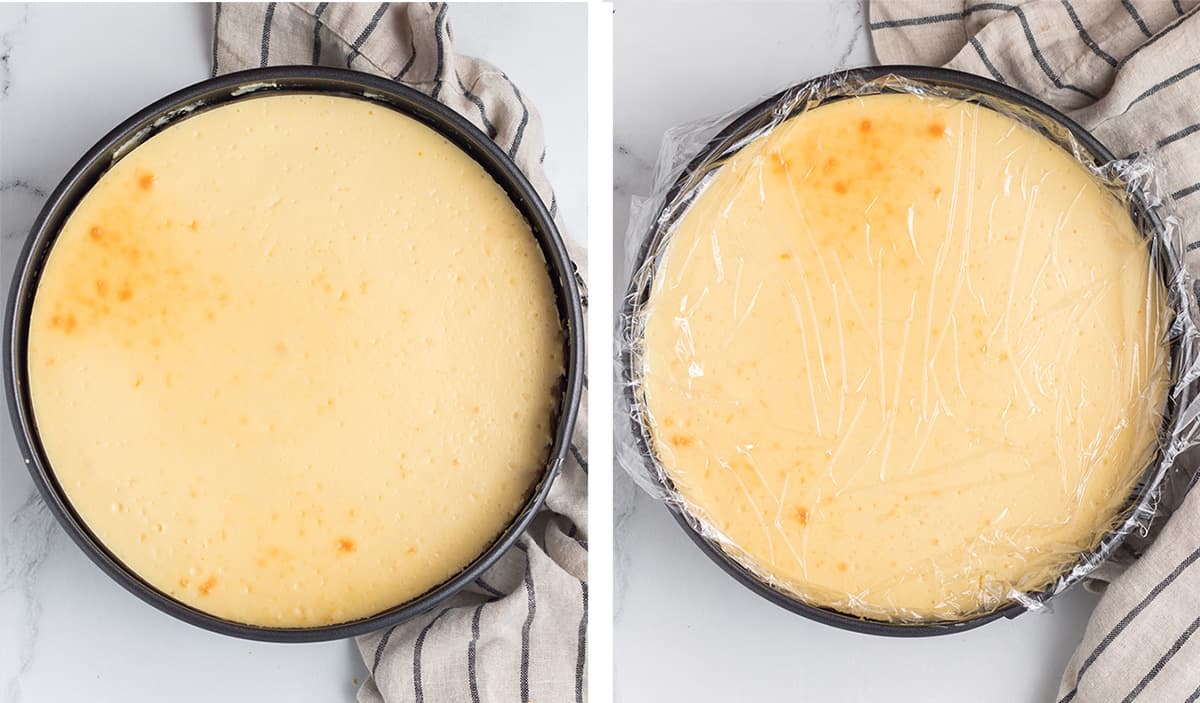
Removing Cheesecake from a Springform Pan
Do not remove the sides of the springform pan until after the cheesecake has completely cooled overnight in the refrigerator. If you remove the sides while it’s warm, great big cracks will form on the top as it settles.
- After removing the cheesecake from the oven, let it rest for 10 minutes then run a knife along the edge of the pan to loosen the sides.
- Let it cool at room temperature for 1 hour.
- Then refrigerate the cheesecake in the pan overnight.
Once the sides are removed you can serve the cheesecake right from the base or transfer it to a serving plate. To remove the cheesecake from the base of the springform pan, slide a long thin spatula (I used my fish spatula) between the cheesecake and base to loosen it, then use two spatulas on either side of the cheesecake to slide it on to a cake platter.
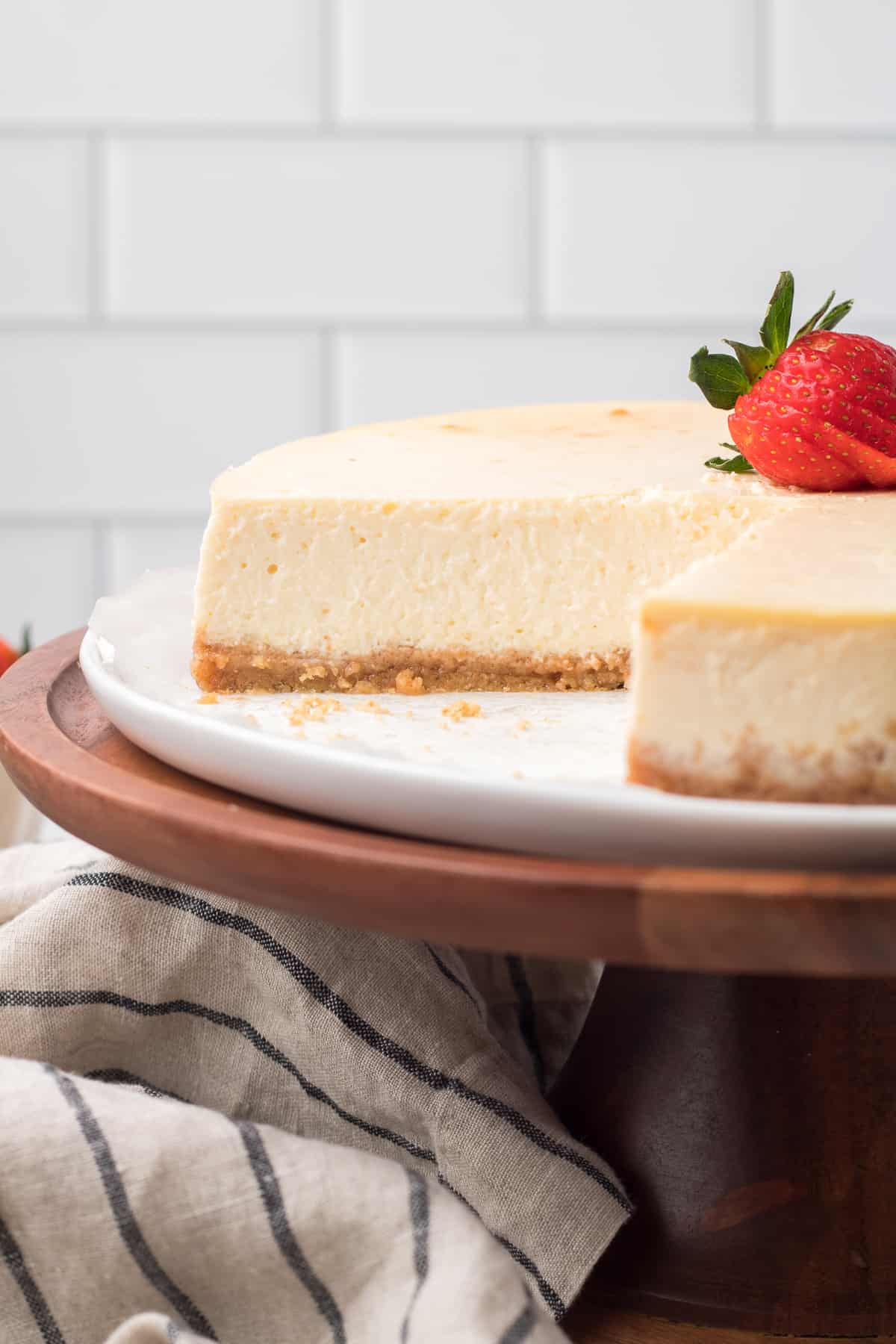
Tips for the Best Light Cheesecake
- Size – I’ve baked this in both an 8-inch and 9-inch springform pan and both work. If you use a smaller pan, the cheesecake will have a slightly thicker crust and higher profile. The cheesecake pictured in this post was baked in a 9-inch pan.
- Bain-Marie (Water Bath) – If you want a cheesecake that is free of cracks on the surface, I recommend baking it in a water bath. Any deep, oven-safe pan that is large enough to hold the springform pan with room around it for the water will work. I use my turkey roasting pan.
- Aluminum Foil – Even if you’re using a leakproof springform pan, wrap the bottom of the pan (and slightly up the edges) in two layers of heavy duty foil to prevent water from seeping inside.
- Skipping the Water Bath – Just place the springform pan on a baking sheet and transfer it to the oven. If a crack or two forms on the surface, you can easily cover them with a dusting of powdered sugar and fresh berries.
- Condensation – Pressing a piece of plastic wrap gently against the surface of the cheesecake before chilling can help prevent condensation. If moisture still forms, just use a paper towel to lightly blot the surface dry.
- Plan Ahead – Baking a cheesecake is a two day process when you take into account the chilling time. This is a recipe you should start at least a day in advance of when you’d like to serve it.
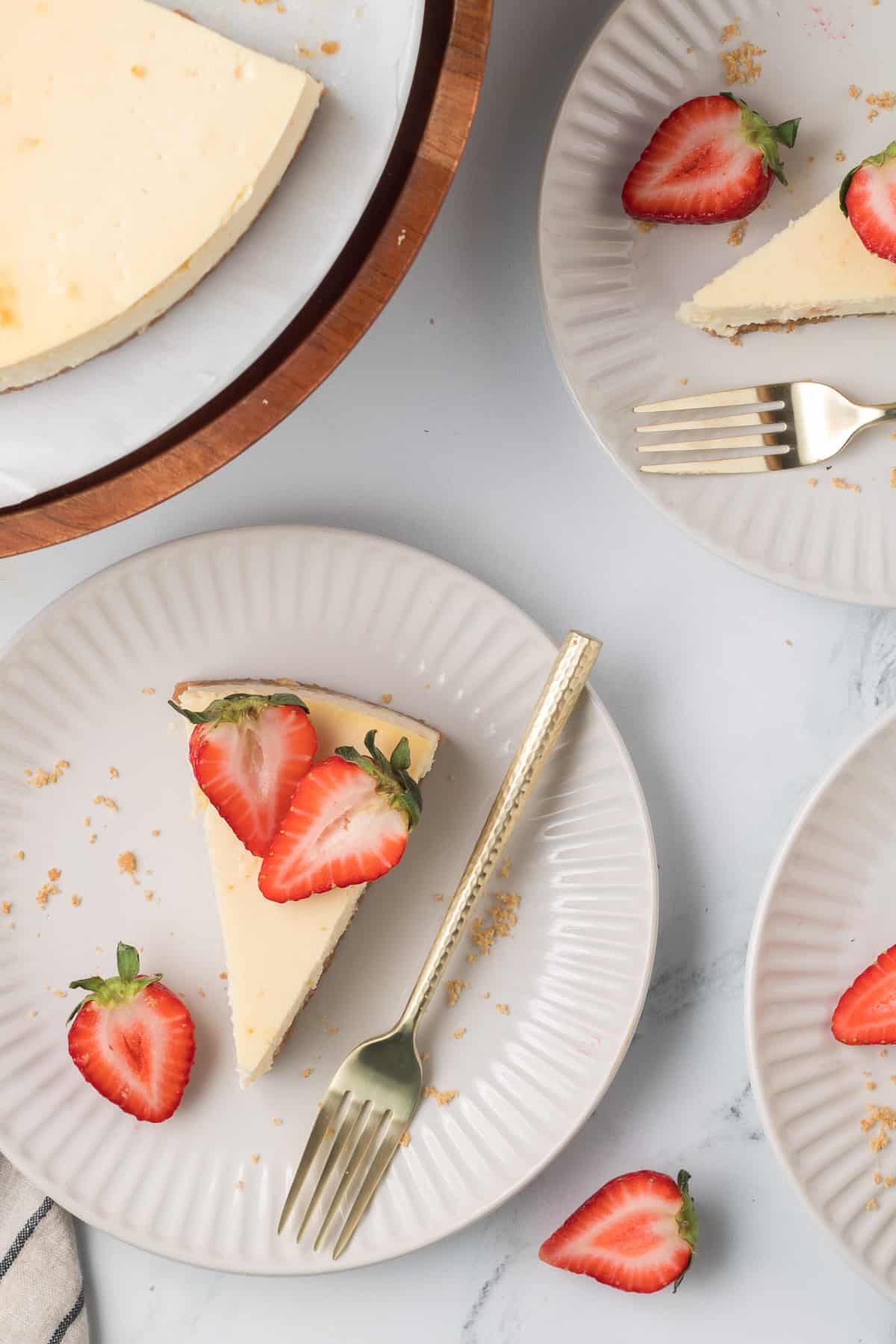
Light Cheesecake Variations
This Light Cheesecake Recipe consists of three dairy products – cream cheese, ricotta cheese, and plain Greek yogurt. You can play with the fat content of each of these items to find what suits your taste best. The recipe below calls for one-third less fat cream cheese, part-skim ricotta, and nonfat plain Greek yogurt. Made as written, it is delicious and super satisfying.
For a slightly richer result, try using whole milk ricotta or 2% plain Greek yogurt. The fat and calories will still be far lower than a traditional, full fat cheesecake.
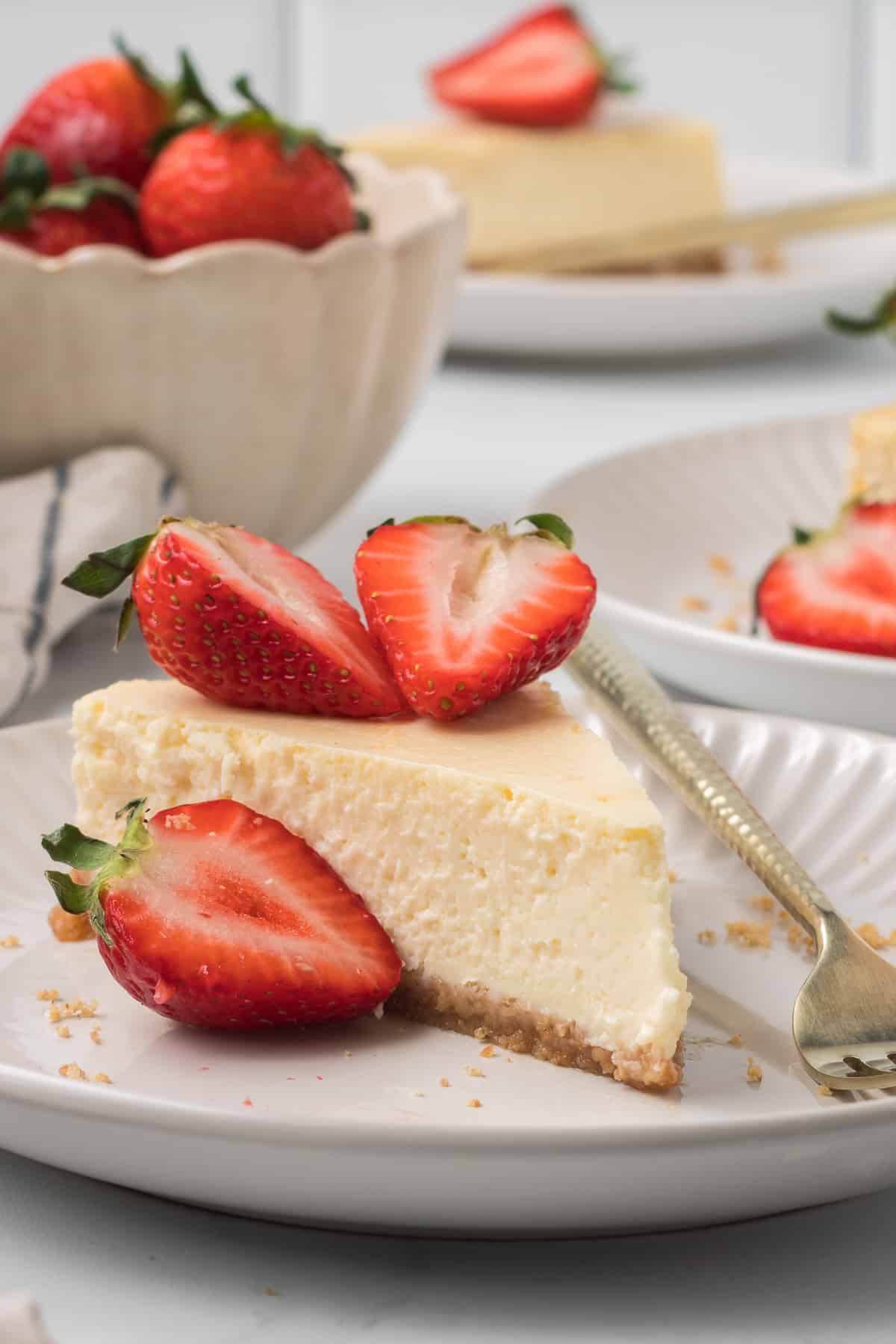
More Healthier Dessert Options
- Strawberry Cheesecake Popsicles
- Homemade Apple Pie Filling
- Raspberry Almond Thumbprint Cookies
- Paleo Chocolate Chip Cookies
For more healthy cooking inspiration, join us on Facebook, Instagram, and Pinterest and join our FREE email list for the latest recipes straight to your inbox!
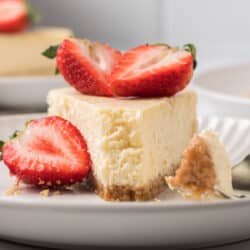
Light Cheesecake
Equipment
Ingredients
For the Crust
- 1 ½ cup graham cracker crumbs, from about 12 full sheets
- ¼ cup granulated sugar, or sugar substitute equivalent to ¼ cup sugar
- 6 tablespoons butter, melted
For the Light Cheesecake Filling
- 16 ounces ⅓ less fat cream cheese, room temperature
- 15 ounces part-skim ricotta cheese, see notes below
- ¾ cup nonfat plain Greek yogurt, see notes below
- 1 cup granulated sugar, or sugar substitute equivalent to 1 cup sugar
- 3 large eggs, room temperature
- 1 teaspoon lemon zest
- 2 tablespoons lemon juice
- 1 tablespoon vanilla extract
- 3 tablespoons cornstarch
- Fresh strawberries, sliced
Instructions
Make the Graham Cracker Crust
- With an oven rack set one position down from the center of the oven, preheat the oven to 350 degrees F. Coat the bottom and sides of a 9-inch springform pan with nonstick cooking spray. Place it on a sheet of heavy duty foil (about 18-inches square). Securely wrap the foil around the the bottom and up the sides of the pan. Repeat with another sheet of foil to double wrap the pan.
- In a small bowl, combine the graham cracker crumbs and sugar. Stir in the melted butter, mixing until well combined. Press the crumb mixture onto the bottom of the prepared pan and place the foil-wrapped pan on a baking sheet. Bake for 12 minutes, until lightly browned and fragrant. Cool on a wire rack while you prepare the filling.
Make the Cheesecake Filling
- In a large bowl, beat the cream cheese, ricotta, yogurt, and sugar until smooth, scraping down the sides once or twice. Beat in the eggs, lemon zest, juice and vanilla. Finally, add the cornstarch and beat just until combined. Pour the mixture over the slightly cooled crust in the springform pan.
- Place the foil-wrapped springform pan in a large pan (like a roasting pan) and add about 1-inch of hot water to the larger pan. Pour slowly and carefully to avoid splashing any water on the cheesecake or into the foil around the edges.
Bake the Cheesecake
- Bake at 350 degrees F until the outer edges are golden and nearly set and the center is still a little jiggly (but not totally liquid), 80 to 90 minutes.
Cool and Refrigerate
- Remove the cheesecake from the oven and transfer it to a wire rack to cool for 10 minutes.
- Run a knife around the edges of the cheesecake to loosen it from the sides but don't remove them (this helps prevent cracking and makes it easier to remove sides after it cool). Allow the cheesecake to cool in the springform pan on the wire rack for 1 hour longer. Then, cover it with a sheet of plastic wrap, lightly pressing it on to the surface of the cheesecake to help prevent condensation. Refrigerate it in the springform pan overnight
Serve
- When ready to serve, unhinge the clasp and remove the sides. If there is any condensation on the surface of the cheesecake, gently blot it dry with a paper towel. Serve as is, or remove the bottom by carefully sliding the cheesecake onto a tray (see notes below). Serve with strawberries.
Notes
Nutrition
Nutrition information is automatically calculated using generic ingredients, and is an estimate not a guarantee. For more accurate results, please refer to the labels on your ingredients at home. All information provided regarding nutrition on this website is intended to be used for informational purposes only. Content related to nutrition is not medical advice nor is it intended to replace medical advice. The website is not intended to diagnose, prescribe, or treat any disease, condition, illness, or injury. Before beginning any diet program, modifying your diet, or making changes to the diet of a child in your care, including following the nutrition information available on the website, you should seek advice from a licensed professional.
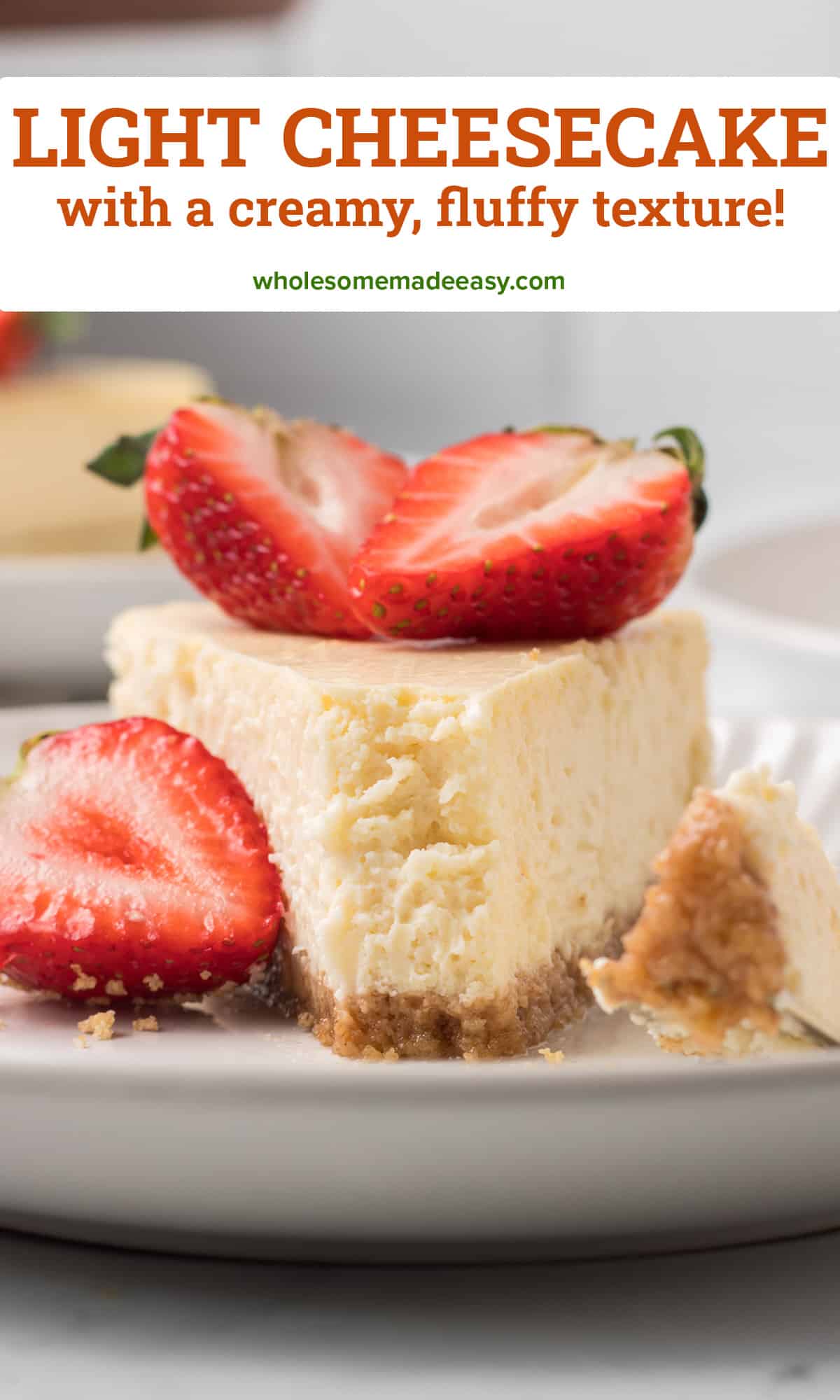

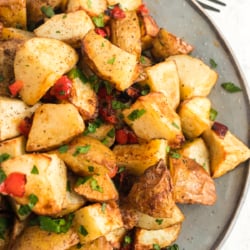
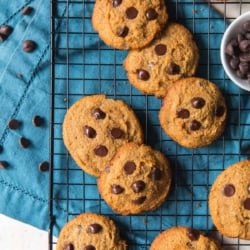
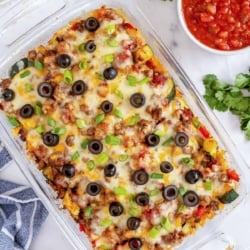
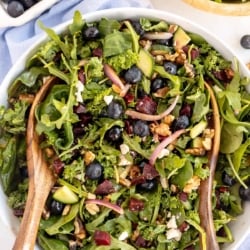
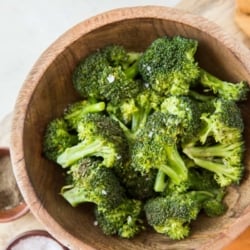
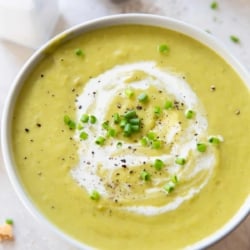






What could be possible substitutions for the ricotta?
I’m confident you could use an equal amount of cream cheese with a good result. I love what the ricotta does for the texture though and without testing, it’s hard to say for sure what the result would be if you change the ingredients.